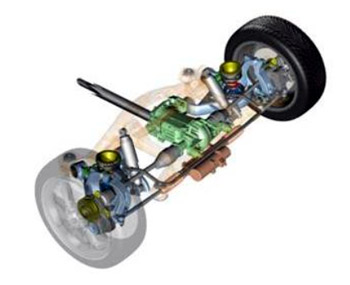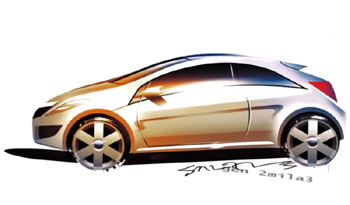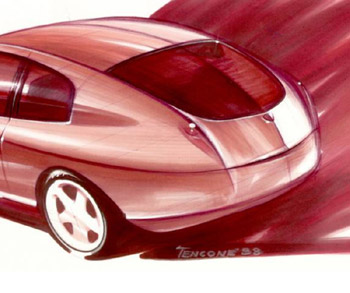|
The Morgan
Stanley 8th Annual European Automotive Conference took place
recently, held in London on the 30th June. Fiat Auto were
present, providing an interesting insight into their new
product strategy and key to success, presented by chief
technical officer Harald J. Wester.
With
Europe accounting for 82 % of Fiat Auto sales (Alfa Romeo,
Fiat, Fiat Veicoli Commerciali & Lancia), response to
the changes in the market is key for success. The main
changes identified by Fiat Auto include:
-
New
demographics - Smaller families, women buyers, aging
consumers
-
New
lifestyles - Reconciling conflicting requirements (e.g.
fuel-efficiency & performance, MPV & Sedan)
-
Market
fragmentation - Segment coverage, Managing product
complexity
-
Product
identity supported by both style and innovation -
Integrated approach to marketing, style and engineering
-
Product
lifecycle - Total cost of ownership vs. list price,
Product refreshment and upgrading
-
Sustainable
mobility - Urban mobility, Environmental friendliness
In terms of
product offering, Fiat Auto will respond to the trend of
accelerating pace of vehicle facelifts and shorter life
cycles, offering no less than 15 new models and 11 facelifts
in the product pipeline for the 2005-2007 period.
Fiat Auto will
also lead the way in technological trends:
-
Materials
- Weight reduction, Recycling
-
Chassis
- Independent rear suspensions on lower segments,
All-wheel drive, Mechatronics
-
Body
- Innovative architectures, Passenger and pedestrian
protection systems
-
Electronics
- Infotainment, Driving assistance, Human Machine
Interface
-
Powertrain
- CO2 reduction, Engine downsizing/Rightsizing,
Alternative propulsions system (Stop&Start; CNG)
An
altogether new “Engineering & Design” organization
will address market drivers, with a central management to
maximize systems & components standardization, whilst
ensuring brand differentiation. One of the most important
additions to the new strategy lies in the leaner
decision-making processes which are being implemented, with
accelerated problem-solving.
|


 |
|
 |
|
Design
and Styling has also been severely reviewed,
with simplicity in lines and shapes being a
firm prerequisite for future models, such as the
upcoming Fiat Stilo replacement. |
|
|
 |
A
new centralised management will maximize systems
& components standardizations, whilst ensuring
brand differentiation. The Alfa Romeo,
Lancia and Fiat brands will all feature their
own distinctive
values and characteristics. |
|
|
Resources will be allocated more efficiently, with an
understanding that segment fragmentation requires for the
ability to recover investments on lower volume basis. As
part of this mindset, innovations will be based on realistic
applications and market requirements.
Design and Styling has also been severely reviewed, with
simplicity in lines and shapes being a prerequisite for
future models. Rediscovery of brand awareness, and high
functionality by means of smart solutions are additional key
factors in order to regain leadership.
Innovative
functions and avant-garde materials will provide for a
high-tech offering, whilst human-touch and a thoughtful
approach to lights and colours will provide for an animate
and pleasantly surprising product array.
A range of
innovation programs covering the environment, ergonomics,
safety, and the fun-to-drive factor are also underway,
including the Multiair system, Stop & Start, a
compressed natural gas Fiat Panda, Steer-by-Wire, Active
Rear Steering, Active Roll Control, and Haptic Lane
Departure Feedback.
Cost competitiveness will be improved by sharing systems,
resulting in a substantial reduction in engineering,
development and product costs, whilst retaining flexibility
for distinct brand differentiation.
Platform sharing will increase, with a targeted 3.3 vehicles
per platform in 2009, and 4.2 vehicles per platform in 2014.
Component standardization is a priority, and as a result
every sub-assembly has been evaluated along the lines of
impact vs. constraints. Both
the Fiat Croma and Alfa Romeo 159 serve as case studies to
the future of Fiat. The new Fiat Croma, a perfect product
for families and the fleet market, represents the
importance of market segmentation, covering the third
largest segment in Europe (20% of sales by value, 2.4
million vehicles), which has remained untapped by Fiat
since the early 90’s.
Meanwhile the Alfa Romeo 159 moves the brand up another
notch after the renaissance of “German quality with
Italian pizzazz at a French price” was launched with the
156 and 147 models. The Alfa Romeo 159 is designed to
engage head-on in the Western European lower-premium
segment, and will simultaneously boost residual value of
Alfa Romeo’s.
Continued
on Page 2 >
Page
1/2 |
|
![]()
![]()